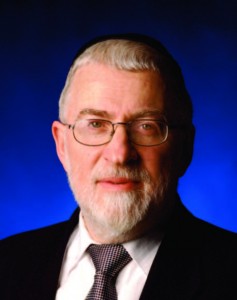Science and the Sages
Rabbi Hershel Schachter, rosh yeshivah at Yeshiva University’s Rabbi Isaac Elchanan Theological Seminary and OU posek, speaks with Jewish Action about the conflict between Torah and science.
Jewish Action: Did the Tannaim and Amoraim learn science from the Torah or from the scientists of their generations?
Rabbi Hershel Schachter: The Gemara says in the first chapter of Bechoros that just like the Sages had rules regarding how to derive halachah from the Torah (middos shehaTorah nidreshes bahen), they also had rules about deriving science from the Torah. We don’t even know how to use the rules for halachah, let alone for science. But the Tannaim did. However, this does not mean that they learned all their science from the Torah. They clearly also relied on the scientists of their time, as we all do. Sometimes this means that they relied on what was later discovered to be the scientific mistakes of their time.
JA: If halachah is determined according to Talmudic science and contemporary science disagrees, should the halachah change?
RHS: A great-grandson of the Chasam Sofer who was the rabbi of Klausenburg, Rabbi Moshe Shmuel Glasner, wrote a commentary on Chullin called Dor Revi’i. His introduction to this sefer is really an introduction to the entire Torah Shebe’al Peh, the Oral Torah. He discusses this issue, which the Ramban raises. The first mishnah in Horayos says that if the beis din hagadol, the Sanhedrin in Jerusalem, rules incorrectly and you know it is wrong, you are not allowed to follow this ruling. However, Rashi on Chumash quotes the Sifrei who states that you have to follow the Sanhedrin even if they mistakenly say that right is left. How does one deal with this contradiction?
The Dor Revi’i thinks that the answer is the following: If the rabbis make a mistake regarding scientific information but in their generation it was accepted as correct science, then the ruling is binding even though we live in a later generation and we know that the science is incorrect. But if even in their generation the science was known to be incorrect, then the ruling is not accepted. I don’t think this approach makes sense. Wrong is wrong!
I think that we have to follow the approach of the Tannaim and Amoraim. They followed the latest scientific developments of their time. Similarly, in every generation, we have an obligation to follow the scientific consensus. Rav [Yosef Dov] Soloveitchik once said at a Chag HaSemikhah that we shouldn’t rush to change the halachah because scientists can change their minds. Halachah needs to be around for a long time. But if many years pass and something is accepted as a scientific fact [which contradicts halachah], then we need to reconsider the halachah.
Maybe the halachah was established even if that scientific reality is not correct. While the Talmud seems to say that one may kill lice on Shabbos because they do not reproduce but generate spontaneously, Rabbi Moshe Tendler frequently says that spontaneous generation is not an underlying principle of this halachah. Lice reproduce differently and that is what the Gemara means. That is why there is no prohibition to kill lice on Shabbos.
Similarly, regarding worms in fish, the Gemara says they are kosher because they were generated in the fish. But we now know that they came from outside the fish. Rav Shlomo Zalman Auerbach explains that this means that the worms were not visible to the naked eye until they grew in the fish. That is considered as if they were generated in the fish.
But if there is a halachah that is clearly based on a [scientific] mistake, that you cannot interpret differently and is outright incorrect, how can you continue observing it? It’s based on a mistake. We believe in Torah min HaShamayim—it’s a Divine code. If there is a mistake, it’s a man-made mistake. HaKadosh Baruch Hu doesn’t make mistakes.
Interview by Rabbi Dovid Bashevkin, the director of education for NCSY. Rabbi Bashevkin is completing a doctorate in public policy at The New School in New York.

